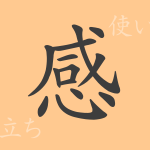The culture of Japanese characters is profound, and among them, Kanji hold a particularly deep significance. Each character’s meaning and history narrate the richness of the Japanese language. In this feature, we spotlight the commonly used Kanji “Miki” (幹), delving into its origin, meanings, usage, and even phrases and proverbs. By deepening your knowledge of “Miki” (幹), let’s further enhance our understanding of the Japanese language.
Origin of “Miki” (幹) – Etymology
The Kanji “Miki” (幹) is said to have derived from a pictograph representing a tree. Originally used to depict the main part of a tree – the “trunk,” it has over time come to acquire metaphorical meanings as well. As the trunk is the central part supporting the life of a plant, the word evolved to refer to the main or central part of something.
Meaning and Usage of “Miki” (幹)
Beyond its basic meaning of “the main part of a tree,” the Kanji “Miki” (幹) also signifies “the central part of an organization or group” or “the core part that constitutes the essence of a matter.” In terms of usage, it appears in words like “Kanbu” (幹部 – executive member), “Kanji” (幹事 – organizer or secretary), and “Kansen” (幹線 – main line), where it denotes a central role or foundation.
Reading, Stroke Count, and Radical of “Miki” (幹)
Basic information about the reading, stroke count, and radical of the Kanji “Miki” (幹) is as follows:
- Reading: The Onyomi is “Kan,” and the Kunyomi is “Miki.”
- Stroke Count: “Miki” (幹) has 13 strokes.
- Radical: The radical of “Miki” (幹) is “Henzukuri” (木偏 – tree radical).
Idioms, Phrases, and Proverbs Using “Miki” (幹) and Their Meanings
There are various idioms, phrases, and proverbs that include “Miki” (幹), such as:
- Kanbu (幹部): The important central part of an organization or those people.
- Kanji (幹事): A person who performs central administrative duties in a meeting or organization.
- Konkan (根幹): The fundamental and essential part of something.
- Kansen (幹線): A major route within a transportation network.
- One arrow is easily broken, but ten arrows bundled together are hard to break: Unity is stronger than individual effort.
Conclusion on “Miki” (幹)
The Kanji “Miki” (幹) started as a representation of the main part of a tree and has become an important character signifying the core of an organization or matter. Its applications are diverse, playing a central role in the Japanese language. Through this article, we hope to deepen your understanding of “Miki” (幹) and contribute to your enjoyment of the rich world of Japanese expression.

























